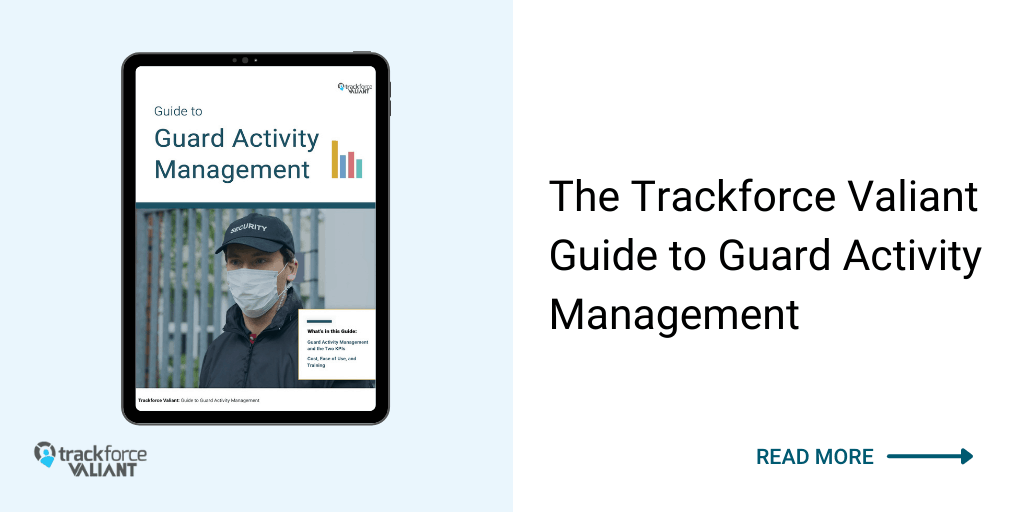Whether security company owners want to believe it or not, technology is quickly changing. And, as a new generation of security guards start, Bring Your Own Devices (BYOD) isn’t going anywhere.
So what is it and how can physical security companies benefit from BYOD? Read on to find out.
What is a Bring Your Own Device policy?
Bring Your Own Device, or BYOD, is a practice that allows employees to safely use their own personal devices for work-related purposes. In the physical security space, this often means allowing your guards to use company approved guard management software that’s been downloaded to their device.
Since technology is changing so quickly, having BYOD reduces costs, relies on cutting-edge features, and lets guards use the device they’re most familiar with. But, using BYOD tactics require strategy and that means there are a few things to think about before starting.
What should physical security companies consider?
Security companies have been taking BYOD more seriously. This means that at a minimum, companies need to think about how their guards will be using their personal devices. Visibility and control are key. And this calls for a BYOD Policy.
What is your BYOD policy?
A BYOD policy balances visibility, control, and guard privacy. This means that security companies can have strict control of how guards use their personal devices while on a shift – but only when using the company’s chosen guard management application.
Every company will have their own BYOD policies that will balance client and company needs. This is where the three “Ws” come to play. Who, When, and Where.
- Who does the policy impact?
- This can be anything from guards touring directly on site to managers monitoring guard and site activity on their personal devices.
- When is the policy active?
- It’s important to make clear when the policy is in effect, when the app is in use, and when a guard is on shift. Sometimes, policies can also require that the personal device connect to a corporate WiFi to be used, as an added security measure.
- Where does the policy take effect?
- It’s important to be clear which sites are part of the policy and if there are different policy changes for different sites.
Overall, a good BYOD policy for your guards must be clear. It must let the guard know how their device information will be processed, if any information is collected. Plus, it must also say what will happen if or when a guard leaves the company.
Gain ultimate visibility to improve their security operations
- Real-Time Incident and Activity Reporting
- Guard Tour Monitoring
- Real-Time Tracking
- Cloud Based System
- Command Center (GSOC)
- Real-Time Notifications
Not all BYOD use cases are the same
Balancing security and privacy risk can be hard sometimes. Protecting client information while also protecting guard’s privacy can quickly blur with BYOD use. Here are a few things to think about:
When a guard leaves the company
Security company owners must safeguard their client’s security no matter what. This also applies to BYOD policies. So, when a guard leaves the company, there are decisions that must be predetermined about how to handle the situation. Will the app be automatically deleted along with the user information? Will employees have to sign a special NDA?
When there’s a security breach
When sensitive information about a client’s site somehow jumps outside the bounds of work-related activities, that’s when a BYOD policy kicks in. What if a guard’s phone was stolen? To manage that risk, the BYOD policy should determine how to handle the situation. Should the device be remotely wiped? Doing so can potentially wipe the guard’s personal information. So, it might be best to first confirm before stepping over that blurred line.
Pros and Cons to brining your own device
Like with any changing technology, there are serious pros and cons to think about. BYOD is no different.
Pros of BYOD
Savings for the company on purchasing and replacing technology
Imagine not having to buy a new phone for every guard you hire. Instead, you can cut costs by allowing your guards to use their own devices. Plus, while some guards may not have their own devices, it’s becoming a rarity as younger generations enter the guard pool.
Up to 77% of adults in the US already have a smartphone while 92% of people ages 18-29 years old own one.
No learning curve for employees
You won’t have to create a learning module on how to use a new device if you have a BYOD policy. That’s because guards will already know how to use their device – since it’s theirs! That means work can start from day one with ease. Plus, guards will have less devices to manage, which ultimately means less assets your managers have to guard against potential theft.
More up-to-date tech due to personal upgrades
When guards bring their own devices, it means that they’re the ones who carry the cost of device upgrades. Plus, if your chosen guard tour app is available for both Android or Apple devices, guards can feel more at ease using the device they most prefer. This allows them to complete their tours with less technology anxiety.
Cons of BYOD
With pros, there are a few cons to consider.
Detailed security plans
You can’t get away with a simple BYOD policy, especially if your guards are touring multiple sites. It’s also important to consider how site and client information is kept safe, such as images taken for reporting or for any PDF downloads that could hold sensitive or proprietary information.
Some employees may not have their own devices
Even though it may be rare, there may be a situation when an employee can’t or won’t use their personal device for work-related purposes. If this happens, your BYOD policy must have a contingency plan. Will there be a fallback device? Should guards be required to purchase a second phone? All of this and more must be considered.
A Few Tips and Best Practices
Make a plan
We said this before but it’s worth repeating. Having a BYOD policy is crucial. Like any other business policy, your guards need guidance on who, what, and when the policy is in effect. This also means that your company needs protection against any employee misuse, for whatever reason.
Manage risk
How will your company handle proprietary information? What about compliance measures? Depending on the industry your clients serve, any BYOD policy should include a risk profile. Perhaps some clients would prefer guards use company devices where others might be just fine with a BYOD policy in place. It all depends, and is determined, when your team evaluates the potential risk.
Ensure devices use updated software
Even the biggest players like Apple or Samsung have to provide security fixes with every software update. This means that when your team is not on tour, they’ll have access to browsers and personal applications that all require updates.
Make sure that in your BYOD policy you have a requirement that all personal devices be updated no matter what. This will help prevent vulnerabilities that can trickle down to compromising client security and privacy.
BYOD practices allow your company to save money on unnecessary device purchases and maintenance. Plus, as the younger generation enters your guard pool, the more tech savvy they will be.
The good thing is that Trackforce’s Guardtek platform safely allows your guards to access the platform on any device. Available to booth Android or Apple users, your company can maintain consistency regardless of the device’s operating system.
To learn more about how BYOD can benefit guard management users, feel free to request a demo.



